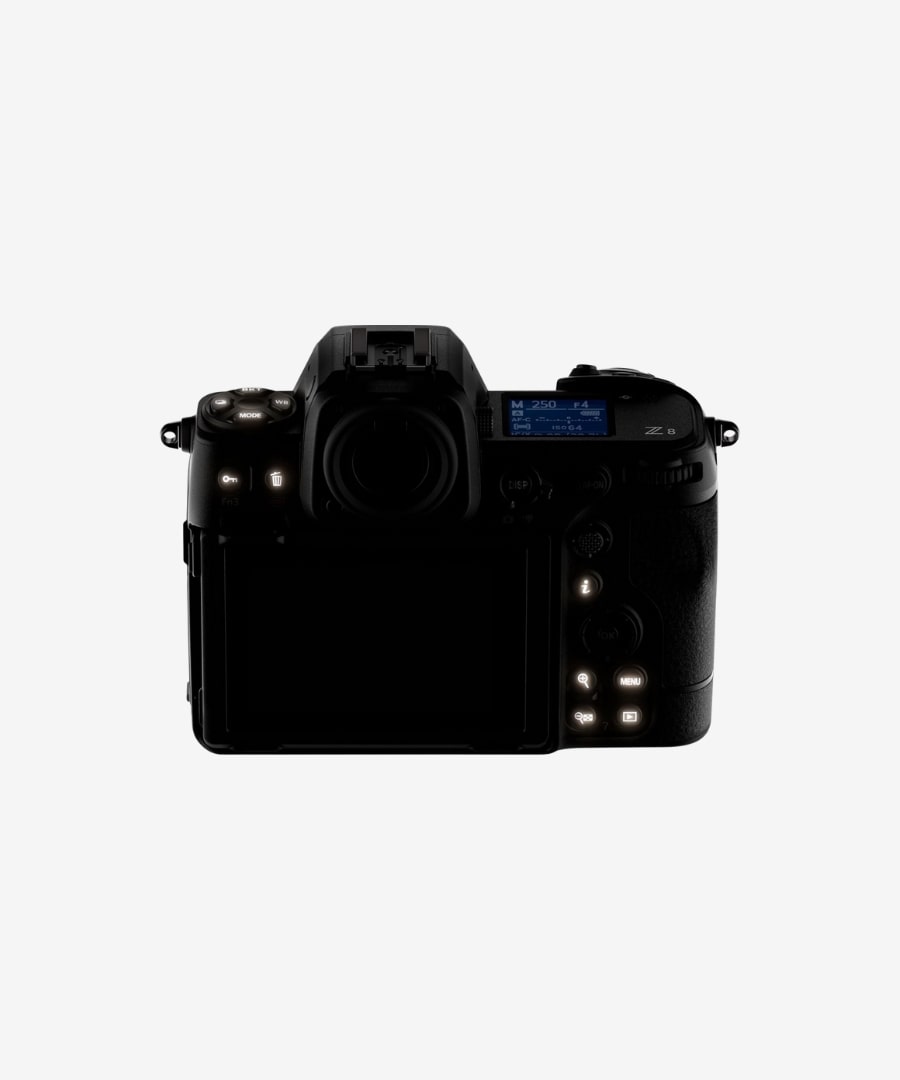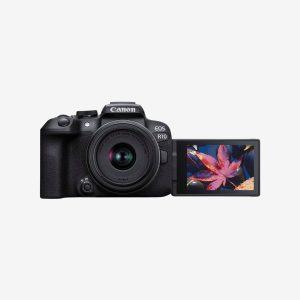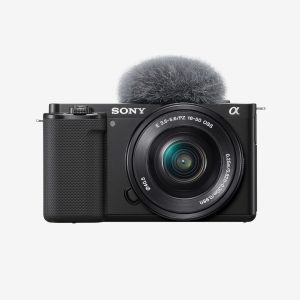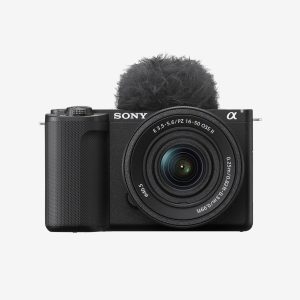The Nikon Z8 is a breakthrough in hybrid camera technology. Professional videographers can now access high-end video features. Its price tag makes it much cheaper than its premium sibling, the Z9. The Z8 backs up its versatility claims with impressive specs. You’ll find its 8K video capability at 60p in N-Raw format quite remarkable.
This camera pushes beyond simple video features. Its 45.7MP Stacked CMOS sensor pairs perfectly with advanced autofocus that works great even in dim lighting. The Z8’s complete feature list shines with 4K recording at up to 120fps. You also get a 14.2-stop dynamic range and dual USB-C ports that let you record for extended periods.
Let’s dive into the Z8’s video capabilities. We’ll look at everything from its pro-grade features to what you need to know for real-life videography. This piece will show you if this hybrid powerhouse matches your video production needs.
Video Recording
The Z8’s video capabilities shine through its multiple recording formats and codecs. Users can pick from three basic file types: NEV, MOV, and MP4. Each format meets specific professional needs and user priorities.
The Z8 delivers maximum quality with N-RAW 12-bit recording in NEV format and ProRes RAW HQ 12-bit in MOV format. On top of that, it supports ProRes 422 HQ 10-bit, which works great for professional post-production. Storage management becomes easier with H.265 compression in both 8-bit and 10-bit variants. The H.264 8-bit recording in MP4 format will give a wide range of compatibility options.
Video Codecs and Formats
The Z8 lets you be flexible with tone modes. Users who shoot in N-RAW, ProRes RAW HQ, or ProRes 422 HQ can choose between SDR and N-Log profiles. The H.265 10-bit option adds HLG support to boost the camera’s dynamic range capabilities.
Professional audio quality comes standard with Linear PCM format in most video types, while MP4 recordings use AAC. You can record up to 125 minutes of 4K UHD at 60p and 90 minutes of 8K UHD at 30p continuously.
High Frame Rates
The Z8 packs impressive frame rate capabilities. The camera supports:
- 8K UHD (7680 x 4320) at 30p/25p/24p
- 4K UHD (3840 x 2160) at 120p/100p/60p/50p/30p/25p/24p
- Full HD (1920 x 1080) at 120p/100p/60p/50p/30p/25p/24p
Slow-motion fans will love the Z8’s specialized modes at 1920×1080 resolution, with options for 30p (4x), 25p (4x), and 24p (5x). The 4K footage gets a quality boost from 8K oversampling, which creates sharper details and better clarity.
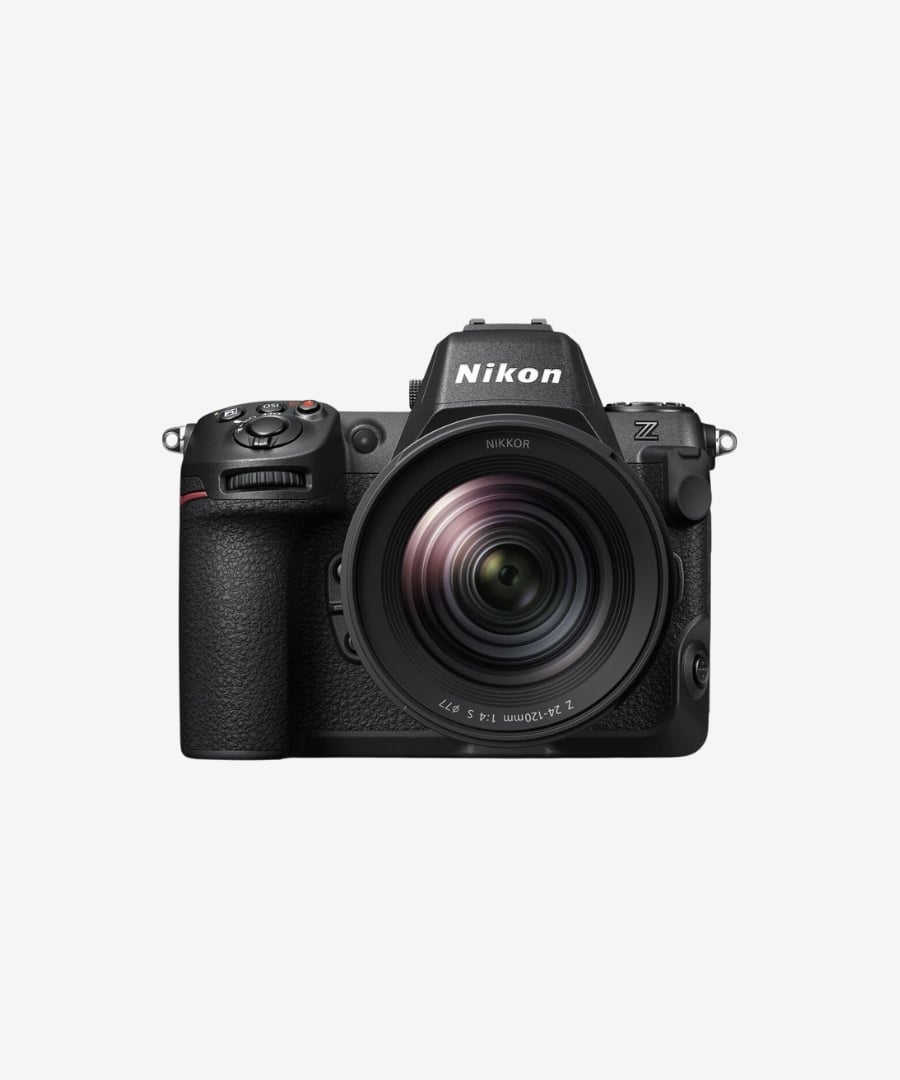
8K Video
The Nikon Z8 delivers amazing 8K recording through its 45.7-megapixel stacked CMOS sensor. You get stunning 8.3K footage at 60 frames per second in 12-bit N-RAW format. This sets new standards for high-resolution video capture.
The Z8 lets you shoot 8K at 24p, 25p, 30p, or 60p frame rates. Your recording format options at this resolution include 12-bit N-RAW, ProRes RAW HQ, and 10-bit ProRes 422 HQ. Videographers can pick between maximum quality and manageable file sizes based on their project needs.
Storage space becomes a big deal with these high-quality formats. A 650GB CFexpress card gives you about 14-15 minutes of recording time at 8.3K/60p in N-RAW format. Dropping to 50p frame rate stretches this to roughly 16-17 minutes per card.
The Z8 shows impressive stamina by recording 8K/30p for up to 90 minutes. The camera’s built-in safeguards help manage heat. Users report getting heat warnings after 30-45 minutes of continuous 8K/60p N-RAW recording. Heat management is vital especially when you have warm environments or direct sunlight.
The Z8 needs high-speed CFexpress Type-B cards with at least 256GB capacity. Memory card quality affects thermal performance since lower-quality CFexpress cards can make the compact body heat up faster.
You have practical options for longer shoots. Switching to H.265 10-bit codec gives you much longer recording times while keeping professional-grade quality. This codec works well for most production needs without RAW formats’ massive storage demands.
Pro Video Features
The Z8’s advanced features make it more than a simple video recording device for professional videographers. Its sophisticated toolset begins with powerful N-Log capabilities that preserve intricate details in both highlights and shadows.
N-Log and ProRes RAW Recording
The Z8’s N-Log recording delivers 14 stops of dynamic range, which gives remarkable flexibility for color grading. The camera has multiple professional recording options:
- N-RAW 12-bit recording with approximately 50% smaller file sizes than ProRes RAW HQ
- ProRes RAW HQ 12-bit up to 4K/60p
- ProRes 422 HQ 10-bit for industry-standard workflows
The Z8 creates automatic 1080p proxy files during N-RAW recording to streamline post-production workflow. The footage might look flat at first, but this preserves maximum latitude for color correction.
Waveform Monitoring and Zebras
Professional monitoring tools in the Z8 ensure precise exposure control. The waveform monitor shows immediate luminance information that helps videographers maintain consistent exposure across scenes. Users can customize zebra pattern threshold settings, with recommended values of 230 for Lo 0.3 to 1.0 and 200 for Lo 2.0.
The camera’s View Assist function boosts contrast during N-Log recording. This feature helps check focus and evaluate exposure without affecting the recorded footage.
Time Code and External Recording
The Z8’s complete timecode implementation benefits professional productions. The camera supports both “Record Run” and “Free Run” counting methods. Time codes can be:
- Reset to zero
- Manually entered
- Synchronized with the camera’s internal clock
The Z8 works seamlessly with external recording devices through HDMI output. It transmits timecode to external recorders, including Atomos SHOGUN, NINJA, and SUMO-series monitors. The camera can synchronize timecode over Bluetooth with devices like UltraSync Blue to streamline workflow.
The Z8 has professional audio recording capabilities with 24-bit stereo audio and works with a variety of XLR adapters for professional audio input options.
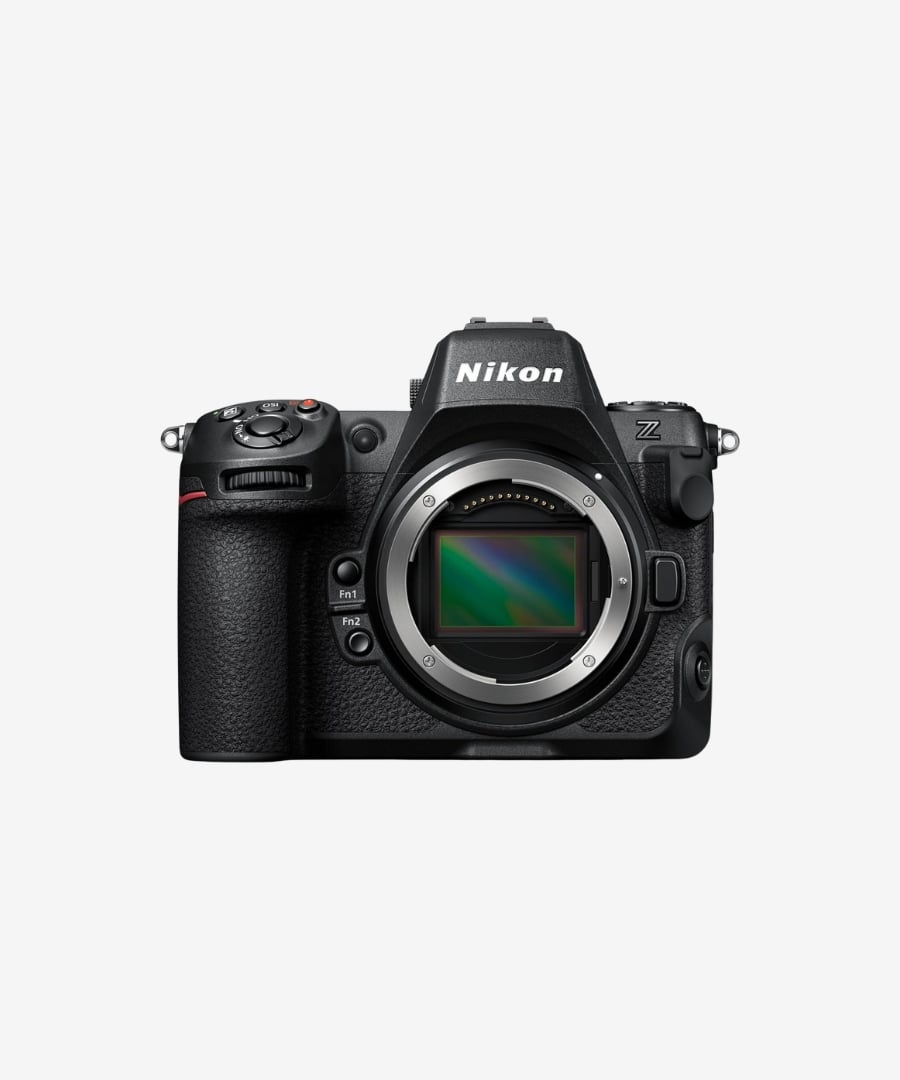
Advanced Autofocus for Video
The Nikon Z8’s professional features include a powerful autofocus system that delivers precise video performance through its 493-point hybrid phase-detection/contrast AF system. Its detection range goes from -7 to +19 EV and reaches -9 EV in starlight view mode.
Subject Detection and Tracking
The Z8 detects nine different subject types for video work. The system keeps focus as subjects move faster and tracks faces accurately in tough conditions. The camera’s advanced tracking algorithm keeps subjects sharp during complex movements without manual adjustments.
You’ll get reliable tracking even in dark conditions. The camera lets you customize focus settings with several AF-area modes:
- Wide-area (S and L)
- Custom areas (C1 and C2)
- Auto-area AF
- Subject-tracking AF
Focus Transition Settings
The Z8’s focus transition controls are a great way to get cinematic quality in your video footage. You can fine-tune focus sensitivity and prevent unwanted focus changes during scene transitions.
The Wide-AF mode can be customized to fit different scenarios and give you better control over the focus area. The system keeps focus steady whatever the subject’s position in the frame.
Custom AF Speed Controls
You get detailed options to customize AF speed and tracking sensitivity. These controls help match focus behavior to your shooting style. The AF-C priority setting lets you choose focus accuracy over release speed to capture sharp footage.
Quick access to your preferred AF modes comes through the Z8’s custom button setup. The Cycle AF-area mode lets you switch between focus modes without diving into menus. This feature becomes valuable when you shoot dynamic scenes that need quick focus mode changes.
The system keeps focus even when objects briefly block your subject. A manual focus override option gives you complete control in challenging situations.
Video Stabilization
The Nikon Z8’s video arsenal features powerful stabilization capabilities. The camera boasts a sophisticated 5-axis in-body image stabilization (IBIS) system that reduces shake by up to 5.5 stops. Users can achieve even better results with up to 6.0 stops when they use Nikkor Z lenses that support Synchro VR.
In-Body Image Stabilization Performance
The Z8’s IBIS system delivers steady footage during stationary shots effectively. We designed the system with handheld shooting in mind, offering two modes – Normal and Sport. Static subjects work best with Normal mode, while Sport mode handles quick, unexpected movements better. The system not only stabilizes video but also helps capture better low-light shots without quality loss.
Electronic VR
There’s another layer of stabilization control through electronic vibration reduction. This feature has some limitations:
- You can’t use it with 3840 × 2160 or 1920 × 1080 crop formats
- It adds a 1.25x crop factor
- It works only with H.265, H.264, and non-Raw ProRes modes
Static shots remain stable with this system, but walking movements can cause some jitter, even in Sport mode.
Gimbal Compatibility
Professional gimbals work seamlessly with the Z8, especially the DJI RS3 Pro through USB-C connection. The best performance requires users to:
- Use the first USB-C port
- Configure USB data connection to MTP/PTP
- Select the right multi-camera control cables
The gimbal setup allows extensive control options including:
- Start/Stop recording
- Trigger autofocus
- Electronic focus pulling
- Aperture adjustments
- ISO control
The camera draws power through the gimbal connection, which affects battery life based on USB protocols. This setup creates a strong platform to produce professional videos by combining the Z8’s internal stabilization with external mechanical support.
Ergonomics and Controls
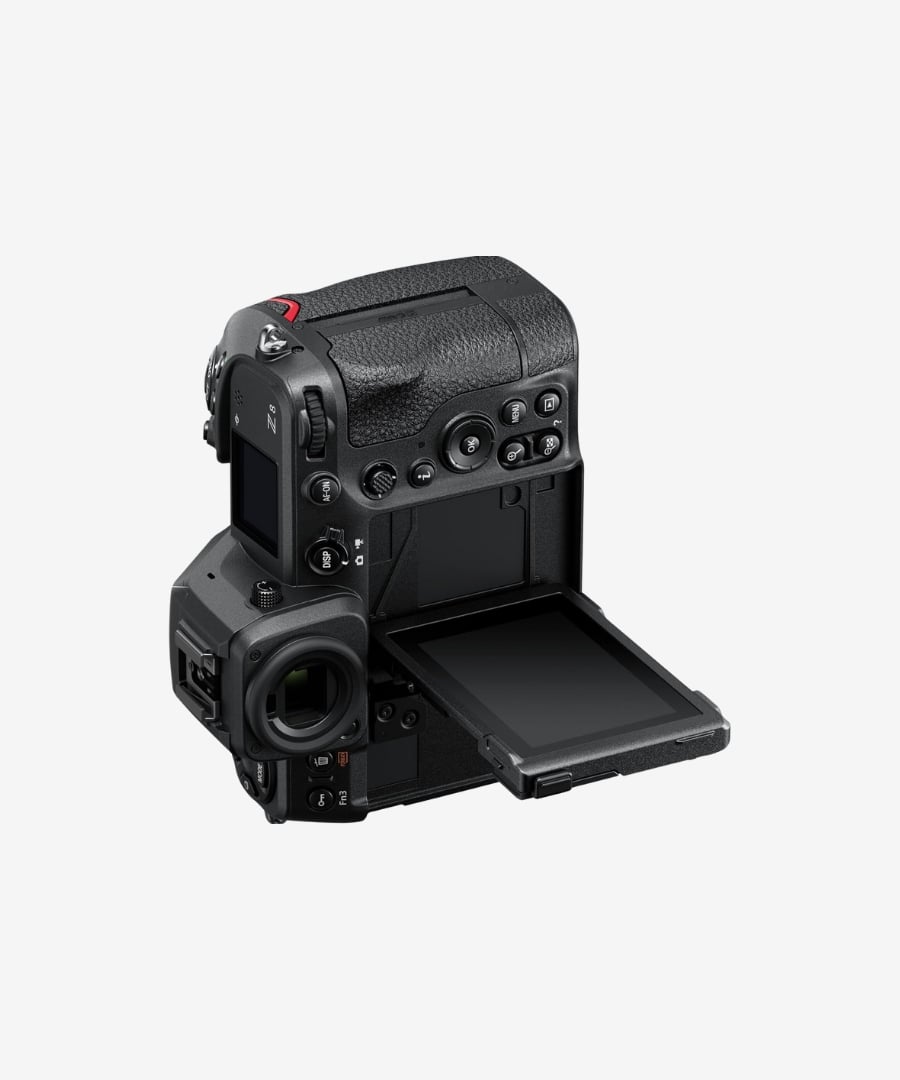
The Nikon Z8 caters to professional videographers with its well-placed controls and extensive customization options. Its deep front-hand grip combines with a 1.8-pound body to give users a stable platform for long video sessions.
Custom Button Configuration
The Z8 gives users detailed button customization options for video work. The Function buttons (Fn1/Fn2) let you set different assignments for photo and video modes. You can set up these buttons through Custom Settings > Controls > g2 Custom Control Assignment specifically for video operation.
The camera comes with several customizable controls:
- Video record button with assignable functions
- Control ring to adjust exposure or aperture
- Custom User modes (U1, U2, U3) to quickly recall settings
The backlit buttons make operation easier in dark conditions, which helps videographers keep their night vision during low-light scenes.
Touch Screen Interface
A 3.2-inch tilting touchscreen with 2.1 million dots resolution and bright 2100-nit display sits at the camera’s heart. This exceptional brightness makes the screen clear and visible even in direct sunlight. The touch interface works just like a smartphone – you can tap to set focus points and swipe through menus.
The camera’s practical Glove Mode feature increases touch sensitivity when shooting in cold weather. A three-way tilt mechanism lets you compose shots from different angles, which works well for various shooting situations.
External Monitor Support
The Z8 naturally connects to external monitors through its HDMI port. You can display footage on larger screens right after connecting, which makes focus pulling and client monitoring easier. The camera works with various external recorders, including Atomos devices, to give you more workflow options.
Remember that the Z8 needs a third-party Type A HDMI cable. You can record to both internal cards and external devices at the same time. The camera works well with professional monitoring tools and supports features like waveform display and focus assistance on external screens.
Audio Recording
Sound quality is leading professional video production, and the Nikon Z8 delivers detailed audio capabilities. The camera supports 24-bit linear PCM audio recording for videos in NEV or MOV format and switches to 48 KHz, 16-bit AAC for MP4 recordings.
Built-in Microphone Performance
The Z8’s built-in stereo microphone system has remarkable versatility through its adjustable sensitivity controls. We can fine-tune recording parameters that include frequency response and wind noise reduction. The built-in microphones provide acceptable sound quality for casual recording scenarios.
The camera provides extensive audio control options:
- Microphone sensitivity adjustment
- Wind noise reduction
- Frequency response customization
- Voice memo recording capability
XLR Adapter Options
The Z8 achieves its full audio potential through the Tascam CA-XLR2d digital adapter. This professional-grade adapter comes with several advanced features:
- Dual XLR/TRS inputs with individual level controls
- High-performance HDDA microphone preamplifier
- +48V phantom power support
- Built-in shock mount mechanism
The adapter supports both dynamic and condenser microphones and offers flexibility for recording scenarios of all types. The system processes audio at professional-grade 16-bit/24-bit resolution with 48kHz/96kHz sampling frequencies.
Headphone Monitoring
The Z8 includes dedicated headphone monitoring capabilities with adjustable volume control. The 3.5mm headphone jack allows live audio monitoring. The system supports direct monitoring through the XLR adapter and offers latency-free audio verification during recording.
The camera maintains compatibility with various monitoring setups. Users might need to adjust the headphone volume through the camera’s menu system to achieve optimal monitoring levels. The monitoring system is especially valuable when recording with external microphones and enables precise audio level verification throughout the recording process.
Handling and User Interface
The Nikon Z8 stands out with its power management features that make it reliable for long video sessions. Its dual USB-C ports allow users to charge and transfer data at the same time.
External Power Options
Multiple charging solutions work through the Z8’s dedicated power delivery port. The camera works with the EH-7P charging AC adapter and the EH-8P AC adapter. The camera’s charge lamp lights up amber while charging and switches off once complete.
Third-party power sources work with the camera if they meet these requirements:
- AC adapters supporting 45W (15V/3A) output
- USB PD-compliant portable chargers
- Type-C connections on both ends
USB-C Power Delivery
A dedicated port powers the Z8’s USB Power Delivery system that supports 45W PD 3.0 protocol. The camera needs about 10W of power to charge its battery. Users can also power the camera with various USB-C sources like laptop power supplies and PD-compatible power banks.
This system proves valuable especially when you have extended video sessions. Videographers can keep shooting by connecting a PD-compatible power source to one USB-C port and using the other port for data transfer or external monitoring. This setup eliminates recording interruptions for battery changes.
The Z8 needs specific power delivery conditions to perform at its best. Power flows only through its designated USB Power Delivery connector. Older batteries like the EN-EL15a don’t support USB charging. The camera’s power management system guards against charging errors, shown by rapid flashing of the charge lamp.
Third-party portable chargers work well with the Z8’s power delivery system. A 20,000mAh power bank with PD 3.0 capability delivers reliable power for long shooting sessions. The camera can charge while powered on as long as the standby timer stays active.
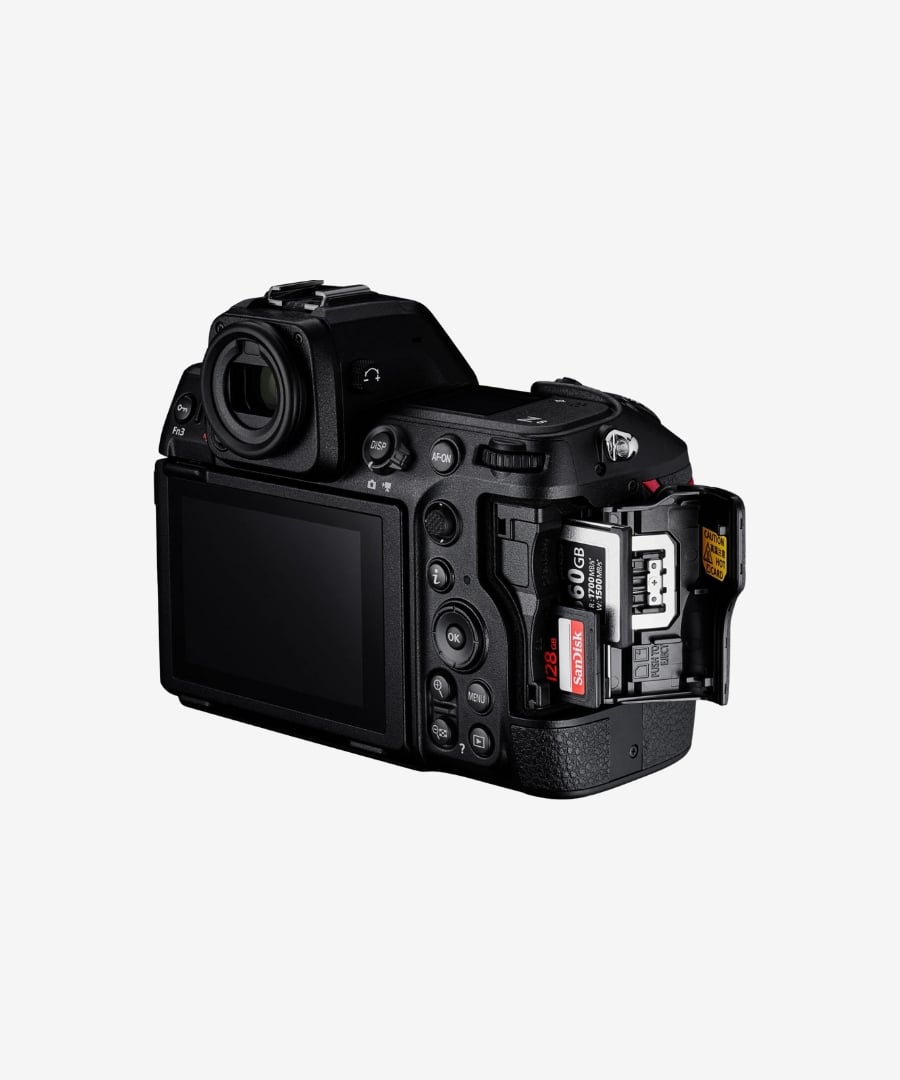
Battery Life
Battery life is a significant factor for video professionals who work with the Nikon Z8. The camera uses the EN-EL15c rechargeable Li-ion battery that delivers reliable performance in a variety of shooting conditions.
The Z8 shows impressive stamina when recording videos. You can record 40 minutes of continuous 8K/60p footage on a single charge. The recording time extends to about 85 minutes when shooting 4K/30p footage. These numbers come from real-life usage with standard settings and an active rear LCD.
Your camera’s power consumption changes based on recording settings. N-Log or ProRes formats draw more power and reduce battery life by about 15-20% compared to standard modes. Recording 8K at maximum frame rates affects endurance because of higher processing needs.
Temperature plays a big role in battery performance. The EN-EL15c works best between 32°F and 104°F (0°C to 40°C). Recording times and battery life might drop when you shoot outside these ranges.
Here are some ways to make your battery last longer:
- Turn off wireless connections you don’t need
- Keep LCD brightness at medium levels
- Switch to viewfinder instead of LCD
- Turn on power-saving mode for long shoots
- Store spare batteries at the right temperature
The EN-EL15c battery takes about 2 hours and 35 minutes to charge fully with the included charger. The Z8’s battery system shows accurate charge levels, which helps you plan your shoots better.
The camera lets you swap batteries without stopping recording when it’s connected to external power. This feature is a great way to handle long interviews or events that need non-stop recording.
The Z8 manages power smartly. It adjusts power use based on active features and recording settings. This smart power handling keeps performance steady during long shoots and saves battery life for when you need it most.
Professional Video Workflow
A reliable workflow setup is vital to maximize the Nikon Z8’s video capabilities. Memory card selection and post-production needs are the foundations of optimal results.
Memory Card Selection
The Z8’s dual card slots need specific attention for professional video work. The CFexpress Type-B slot supports cards with write speeds up to 1700 MB/s. The UHS-II SD slot handles speeds up to 280 MB/s.
These CFexpress Type-B cards provide reliable performance for 8K video recording:
- Lexar Diamond Series (128/256/512GB) with 697 MB/s sustained speed
- Delkin Black (150/325/650GB) maintains 700 MB/s write speed
- ProGrade Cobalt (165/325/650GB) delivers 698 MB/s continuous write
Recording 8K/60p N-RAW needs approximately 722.5 MB/s sustained write speed. A 512GB CFexpress card stores about 12 minutes of 8K/60p N-RAW footage. UHS-II V90 SD cards work well for H.265 recording and support sustained write speeds of 90 MB/s.
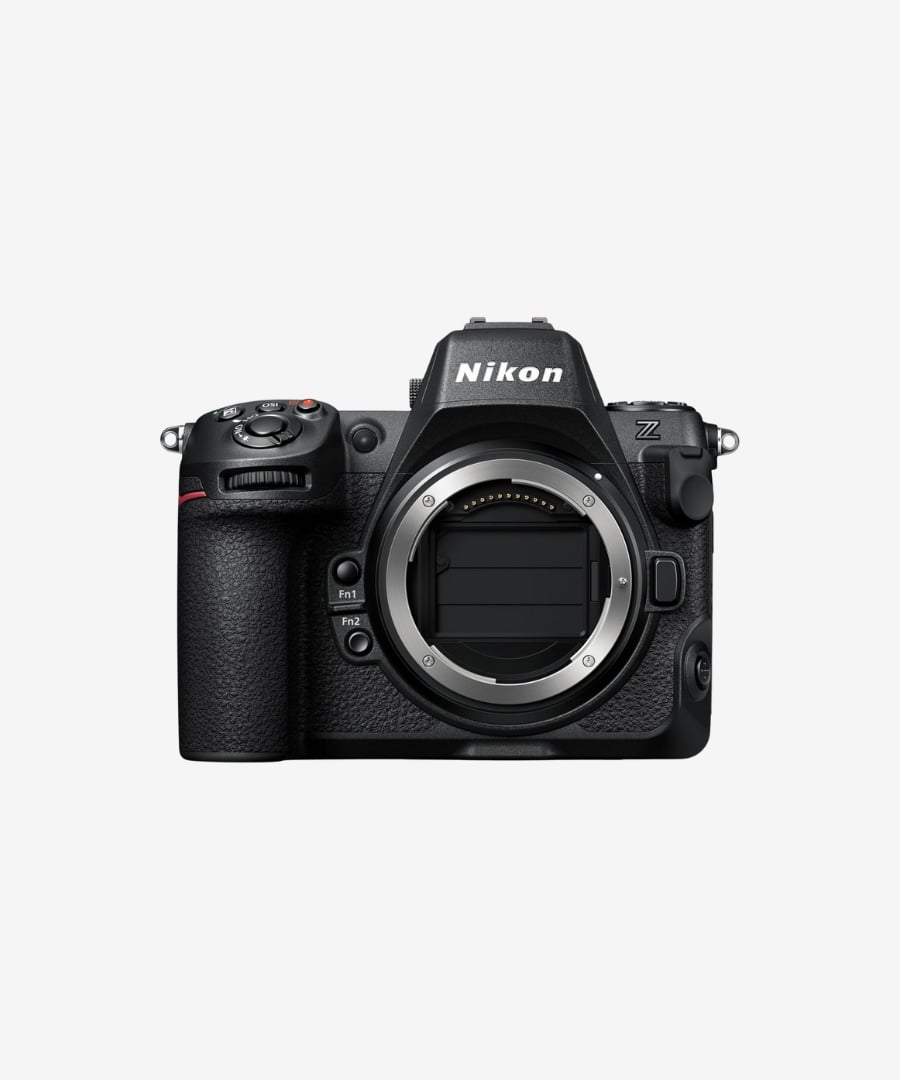
File Management Strategies
Good file management starts with proper card handling. Users should format cards in-camera instead of deleting individual files. The Z8 creates new folders after 4,999 images to organize files systematically.
The Z8’s Frame.io camera-to-cloud services enhance professional workflows. This integration allows quick file transfer to secure cloud storage and simplifies the production process. The camera works with various connection options:
- USB-C data transfer
- Wireless LAN connectivity
- Ethernet connections for stable transfers
Using multiple cards for important shoots provides redundancy. The Z8’s backup recording feature lets you record to both card slots simultaneously, though recording stops if either card fills up.
Post-Production Considerations
The Z8’s recording formats shape post-production workflow choices. Nikon’s free NX Studio software offers simple functionality for initial file management. Professional editors often use more advanced solutions:
Adobe’s Photography Plan remains popular with its complete toolset. DxO excels at noise reduction and sharpening, which helps with wildlife footage. Capture One delivers advanced tonal adjustments but takes more time to learn.
Photo Mechanic stands out for high-volume workflows with rapid culling and initial file management. The software’s speed helps when handling large batches of video files. Your workflow efficiency depends on matching software capabilities to project requirements.
Raw video files need substantial storage space. One hour of 8K/60p footage fills multiple 512GB cards. Professional productions use multi-tiered storage solutions that balance immediate access with long-term archival needs.
The Z8’s N-RAW format creates files approximately 50% smaller than ProRes RAW HQ. This eases storage demands while maintaining professional quality. External hard drives or network-attached storage systems become essential for extended projects.
Conclusion
The Nikon Z8 is a breakthrough in hybrid camera technology that gives professional videographers amazing value through its complete feature set. Our detailed testing shows this camera delivers outstanding 8K video capabilities. Its sophisticated autofocus performance and professional-grade stabilization come at a price that’s substantially lower than similar options.
The Z8 doesn’t cut corners on professional tools. You get N-Log recording, advanced audio options, and flexible power management solutions. The camera’s dual USB-C ports and smart battery management are especially helpful when you have long shooting sessions.
Heat management needs attention during extended 8K recording. The Z8’s thermal performance stays predictable and manageable. Videographers who plan their shoots and pick the right recording formats will find the camera performs well in professional situations of all types.
The Z8 is an upper class camera to get professional-grade capabilities. The camera’s adaptability and resilient feature set make it perfect for seasoned professionals and content creators ready to lift their production quality.

